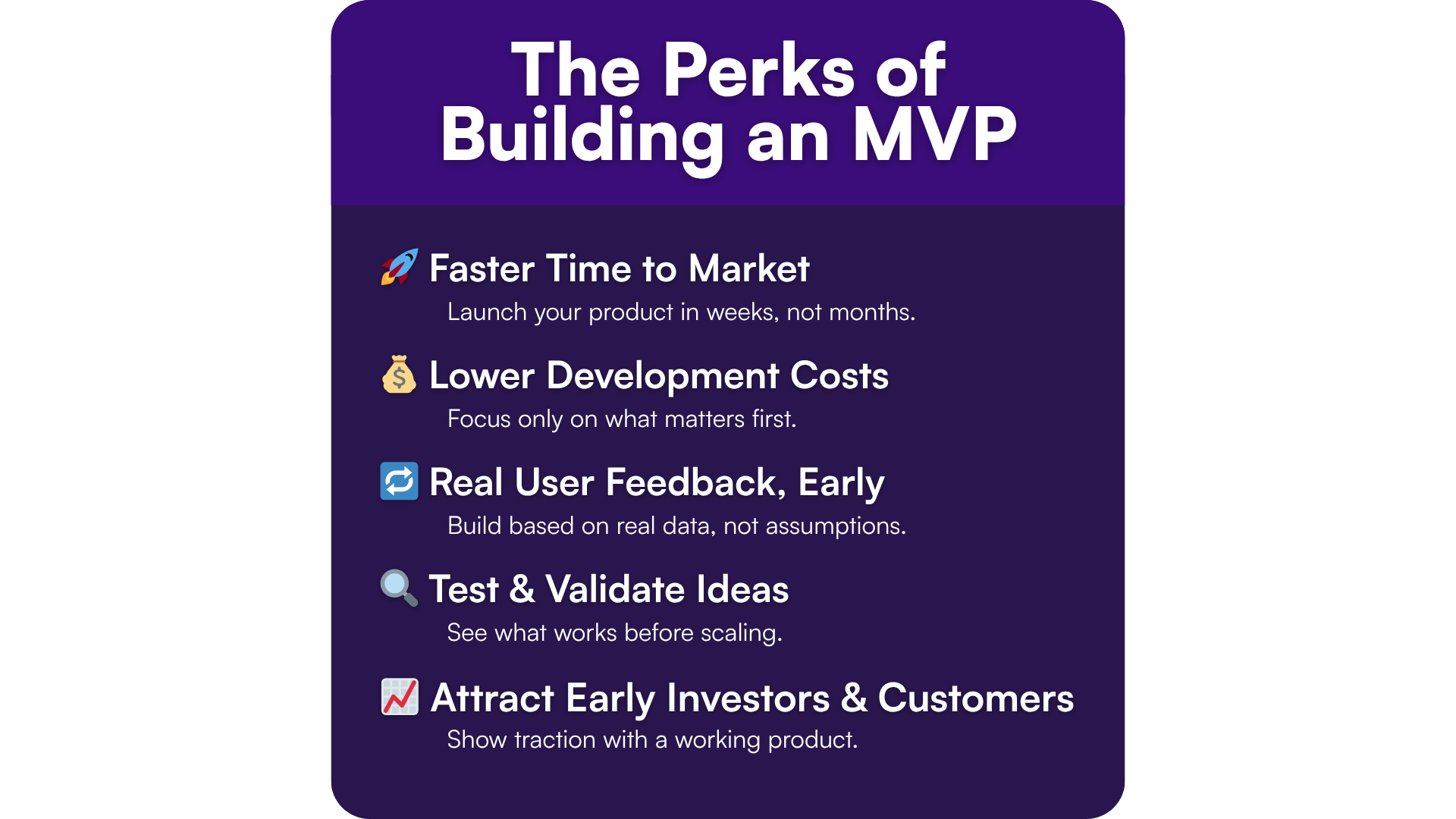
Introduction
Starting a startup is exciting, but when it comes to startup product development, it’s easy to fall into the trap of trying to do too much, too soon. That’s why the idea of a Minimum Viable Product (MVP) is so important. Simply put, an MVP is a stripped-down version of your product that focuses on solving the core problem and lets you test your idea quickly.
It’s not about launching something perfect or packed with features. Instead, it’s about learning what your users actually need with as little time and effort as possible. Getting this right can save you a lot of headaches down the road.
In this post, I’ll explain why MVPs are a game-changer for early-stage startups and share practical tips on how to build one the right way. You’ll learn what mistakes to avoid, how to figure out what to build first, and why the right app development strategy can help you validate your startup idea faster and smarter.
1. What is an MVP and Why Does It Matter?
An MVP — or Minimum Viable Product — is the simplest version of your product that still solves the main problem you’re tackling. It’s all about building just enough to test your startup idea with real users, without wasting time or resources.
The goal of an MVP is to get your concept out there quickly, so you don’t overinvest in features that may not matter. Instead of guessing, you gather real user feedback early, helping you make smarter product decisions.
Why does this matter for startup founders?
- Saves time by focusing on essentials
- Reduces risk of building something people don't need
- Attracts early users and investors by proving there's real demand
An MVP allows you to start small, learn fast, and scale based on actual results — the foundation of any successful startup product launch.

2. Common Startup Mistakes When Building Products
Too many startups make the mistake of building a full-featured product before testing their assumptions. It’s tempting to add every idea you think might help, but without validation, you could be wasting valuable resources.
Other common mistakes include:
- Overspending too early on design, development, or marketing
- Ignoring user feedback, especially in the early stages
- Trying to perfect everything instead of launching and learning
These mistakes slow down your product-market fit journey and delay getting actual traction.
3. How to Build an MVP the Right Way
Building an MVP starts with having clear goals and focusing on the core problem you want to solve. Before jumping into development, get clarity on what success looks like. This sharp focus keeps your startup lean and efficient.
Then, identify only the must-have features that directly support that core problem. Avoid feature creep that adds complexity and delays your launch.
This is where having the right partner makes all the difference. At Digitool, we help founders prioritize what matters most so they can launch a solid MVP quickly and start gathering real feedback.
We recommend following an iterative development process: launch fast, test with real users, and improve based on what you learn. This build–measure–learn cycle keeps your product aligned with actual market needs.
Using fast, flexible software development tools and working with an agile team helps you avoid delays and move with speed. Digitool combines these methods to help startups go from idea to product quickly, without unnecessary overhead.
4. How the Right Development Approach Validates Your Idea
Your development strategy can make or break your MVP. At Digitool, we use an agile development approach built for startup founders who need to stay flexible, fast, and focused.
By working in short, iterative sprints, you can test small parts of your product, gather feedback, and pivot when needed. This agility helps you build a product your users actually want — not just what you think they want.
We also rely on modern development tools that let us move quickly without sacrificing quality. With the right metrics in place — like user activation, engagement, and retention — you can track whether your MVP is doing its job and adjust as needed.
This kind of real-time learning is what turns a simple MVP into a solid foundation for your startup.
.png)
5. Real-World Example: Laboss SaaS MVP
A great example of MVP success is Laboss, a platform for dental labs.
When the founders approached us, they had no wireframes or product specs — just a few notes and a clear understanding of the problem they wanted to solve. We helped them shape those raw ideas into a focused MVP, starting with just the core workflows that mattered most to their users.
By using agile sprints and eliminating unnecessary features, we were able to launch a fully functional SaaS MVP in a fraction of the time traditional development would take. The product was ready to onboard real users, gather feedback, and prove the concept worked.
Today, Laboss continues to grow, adding new features based on real-world usage. If you’d like to see the full story, you can check out the full case study here.
Conclusion
MVPs aren’t just a buzzword — they’re the smartest way to build a product when you’re starting a startup. By focusing on your core value, moving fast, and listening to real user feedback, you create a product that can actually succeed.
Don’t fall into the trap of overbuilding or overthinking. Speed, learning, and adaptability are your biggest assets as a founder.
If you’re looking for a team that can help you build and launch an MVP efficiently, we’d love to talk. At Digitool, we specialize in helping startups turn early ideas into working products — fast, lean, and built to learn.
👉 Book a free strategy call and let’s bring your MVP to life.












